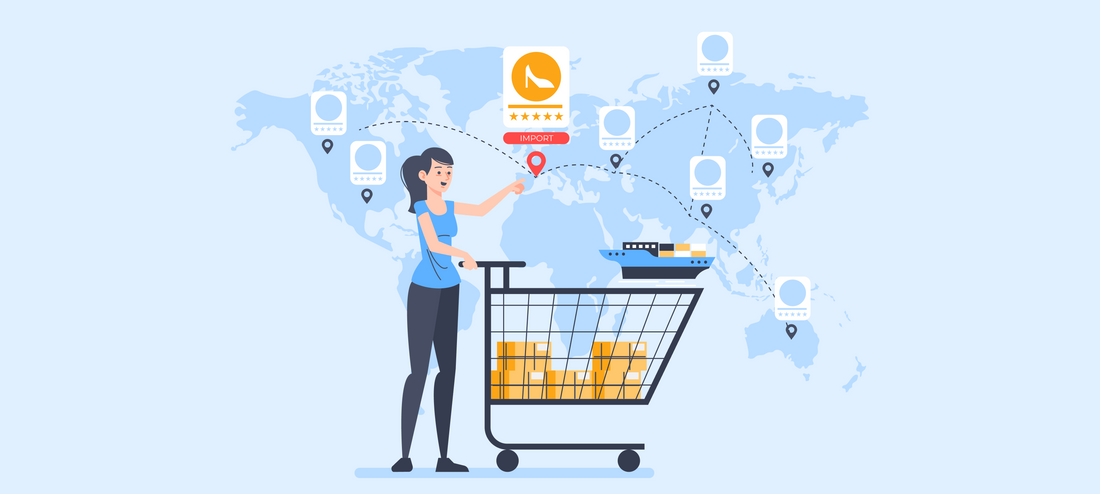How Shopify Markets’ New Features Can Help You Scale Globally
News
shopify market
Shopify Web Design & Development

Introduced in 2021, Shopify markets is a revolutionary initiative introduced by Shopify change cross - border commerce.
Shopify Markets is an ecommerce solution that helps merchants easily expand their businesses through a single online store.
It accelerates international growth by overseeing important aspects of cross-border sales, such as:
- Localizing storefronts for different regions
- Calculating duties and taxes accurately
- Ensuring compliance with international regulations
- Optimizing shipping and fulfilment processes
Without the hassles of running several locations, this makes it easier for retailers to reach customers throughout the world.
What Is The Investment Required In Shopify Markets?
With all of Shopify's plans, the majority of its features are free. However, there are some features that charge extra for orders or transactions made internationally:
- 0.85% fee when using Shopify Payments to calculate duties and import taxes, or 1.5% when using a third-party payment provider.
- 2.0% currency conversion fee (1.5% in the US) when using Shopify Payments.
- Additional fees for processing local payment methods with Shopify Payments.
5 Shopify Market Features That Will Help You Scale Globally
Let us explore the five key features Shopify market offers to facilitate your global business strategy.
- Use of local currency on Shopify platform

Shopify market allows brands with local currency payment alternatives where Shopify payment is supported. While the brand continues to receive payments in its primary currency, customers can shop using their own currency.
Only a nominal charge is taken for currency translation.
This feature lowers obstacles, fosters client confidence, and supports a growth in global sales.
In essence, Shopify Markets lets you run your store across several currencies.
Visit the Shopify Help Centre to see which nations accept payments in local currency using Shopify Payments.
Setting up this feature is easy.
1. Simply navigate to the specific market where you want to offer local currency payment.
2. Select the option 'Show prices to customers in their local currency.'
For instance, your brand is situated in Spain and you accept the Euro as your primary currency. Using this feature allows your US consumers to pay in USD while people in UK can pay in GBP.
Enabling purchases in local currencies is essential for cross-border shoppers. In fact, as per a recent study, 92% strongly prefer it, and 13% abandon their carts if a currency converter isn't available.
- Languages and domains

Using international domains and subdomains is crucial if you want to improve your cross-border selling approach. These components improve your SEO in particular areas including increasing local audiences' visibility of your store.
You can quickly decide whether to create country-specific domains or subdomains for every country using Shopify Markets. Shopify will then automatically apply SEO tags to improve searchability in those regions. The ecommerce platform makes managing numerous businesses easier by generating a subfolder for every new market, so you can manage all of your stores from one central spot. This eliminates the need for managing several stores through separate dashboards.
Furthermore, IP detection guarantees that customers are sent to the right local business, resulting in a smooth online buying experience.
Given that 65% of customers prefer to browse in their own language, linguistic constraints might present a serious problem for foreign retailers.
To solve this, Shopify Markets provides machine and human translation for store translations in up to 20 languages. It was previously challenging to translate a whole Shopify store using third-party apps, but this new functionality provides a more efficient solution that will be beneficial to a lot of retailers.
- Logistics control

Logistical difficulties are frequently encountered while selling in several marketplaces. In order to prevent overselling, managing separate stocks is essential. You might also need to use different pricing techniques in order to maximise profit or adhere to agreements with resellers or merchants.
Thankfully, Shopify provides e-merchants with options that make handling foreign markets easier.
Are you trying to market in multiple Asian regions while keeping a consistent strategy? Or is it that you need to use different tactics for your European markets, which calls for different management?
Shopify Markets has the resources you require, regardless of the circumstances. Through the Shopify Admin, merchants can set up their market areas to function as separate entities or as regional groups, all while utilising local currencies and payment methods.
Additionally, you can manually change prices in Shopify Admin or import a CSV file to customise product pricing for other markets. This enables online retailers to modify product costs in percentage terms or establish different prices for every market.
Finally, the worry of overselling is eliminated, as your international warehouses and inventories can be set to display only the available items for each visitor’s region.
- Grouping countries

It is crucial to adjust your strategy when your brand's positioning differs depending on the location.
You might, for instance, take a quite different approach when selling in Europe, the UK, Australia, and the US, while making very little money in other nations. Under such circumstances, Shopify Markets helps you to combine nations into markets with similar characteristics, so you can keep your communication, pricing, and product offerings constant.
For more efficient operational administration, it is more advantageous to bundle countries together rather than establishing a distinct market for each one you service.
Thus, it's best to create a market named "International" or "Rest of the World," where you can apply a standardised positioning strategy and include nations that are less important to your brand.
- Prices and products as per the market

When brands look to expand internationally, they often adapt their product offerings and pricing strategies based on regional markets. Shopify Markets meets this requirement by allowing businesses to easily adjust prices and manage product availability in different locations, making international expansion more effective.

Who Can Access Shopify Markets?
- Access to Shopify market is only limited to merchants who use Shopify payment.
- Another limitation is the requirement for Shopify Payments, which is only available in certain countries, including the USA, Australia, Japan, Italy, and UK
-
You will not be able to use Shopify Payments if your company is based outside of certain nations, which will limit your ability to take full advantage of Shopify Markets' features.
For instance, in order to charge clients in their native currencies and provide localised payment choices, merchants must use Shopify Payments.
Furthermore, only Shopify Payments allows clients to check out using their chosen payment methods, like Apple Pay and Google Pay.
visit for more information : Tips To Speed Up Your Shopify Website
Final Thoughts
Shopify Markets has all the necessary resources for global success, making it well-positioned to revolutionise cross-border selling for its users. Shopify merchants that are currently selling internationally would especially benefit from this functionality as they might be overspending on third-party apps or not getting the features they want from them. It will also be a great resource for online retailers who want to sell in other countries but don't know where to start.
CrawlApps
At CrawlApps, we don’t just build Shopify stores—we create experiences that sell. We’re a bunch of problem-solvers who love turning ideas into stores that actually converts. Whether it’s fixing what’s broken or building something from scratch, we make sure every detail works in your favor. No fluff, no jargon—just real solutions that help your business grow. If you’re serious about Shopify, you’ll feel right at home with us.















